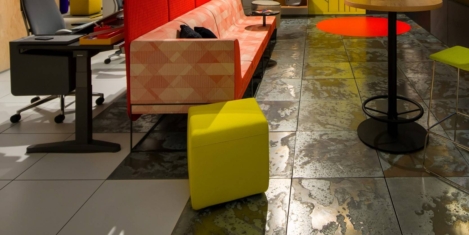November 10, 2017
Brexit thought to be the main culprit for job market attrition and ‘dual’ economy
 There are ongoing dual narratives in UK economy caused by the 2016 Brexit vote, the latest Morgan McKinley October Employment Monitor suggests. On the one hand, a new report by Colliers International dubbed London Europe’s top economic City. On the other hand, institutions are stubbornly stuck in limbo, and the fear of major jobs losses looms thick in the sky, keeping hiring low. “The economic tug of war that Brexit kicked off means we still have no idea quite where we’ll land,” said Hakan Enver, Operations Director, Morgan McKinley Financial Services. October was the lowest jobs month of 2017, a possible indication that the closing months of the year will be especially quiet. Job seekers increased by 6 percent month-on-month, but were down just under 40 percent year-on-year. The trajectories are in line with the overall dual trends of 2017. Jobs available were down 14 percent month-on-month and 20 percent year-on-year. Given the underlying health of the economy, Brexit looks to be the main culprit for the job market attrition.
There are ongoing dual narratives in UK economy caused by the 2016 Brexit vote, the latest Morgan McKinley October Employment Monitor suggests. On the one hand, a new report by Colliers International dubbed London Europe’s top economic City. On the other hand, institutions are stubbornly stuck in limbo, and the fear of major jobs losses looms thick in the sky, keeping hiring low. “The economic tug of war that Brexit kicked off means we still have no idea quite where we’ll land,” said Hakan Enver, Operations Director, Morgan McKinley Financial Services. October was the lowest jobs month of 2017, a possible indication that the closing months of the year will be especially quiet. Job seekers increased by 6 percent month-on-month, but were down just under 40 percent year-on-year. The trajectories are in line with the overall dual trends of 2017. Jobs available were down 14 percent month-on-month and 20 percent year-on-year. Given the underlying health of the economy, Brexit looks to be the main culprit for the job market attrition.

















 Despite recent figures indicating that work productivity is down in Britain, the UK remains a highly attractive country for employers and employees based on a combination of talent, location, quality of life and cost, according to the latest edition of Colliers International’s European Cities of Influence report. The analysis of 50 major European economic cities for employers saw London retain its top position, with all other UK cities in the analysis featuring in the top 20 (Birmingham, Edinburgh, Manchester, Bristol and Glasgow).The report finds that quality of life factors are important to accelerate business and attract talent with the research revealing that the nature of workplace strategy is evolving so rapidly that keeping up — let alone staying ahead of the curve — can be a challenge. Employers are now focused on creating a workplace that can attract and retain talent by incorporating co-working and collaborative facilities, flexible working options and ingraining a healthy mindset. With the onus on keeping employees happy and productive, the design and utilization of the workplace is helping to accelerate business productivity more than ever before.
Despite recent figures indicating that work productivity is down in Britain, the UK remains a highly attractive country for employers and employees based on a combination of talent, location, quality of life and cost, according to the latest edition of Colliers International’s European Cities of Influence report. The analysis of 50 major European economic cities for employers saw London retain its top position, with all other UK cities in the analysis featuring in the top 20 (Birmingham, Edinburgh, Manchester, Bristol and Glasgow).The report finds that quality of life factors are important to accelerate business and attract talent with the research revealing that the nature of workplace strategy is evolving so rapidly that keeping up — let alone staying ahead of the curve — can be a challenge. Employers are now focused on creating a workplace that can attract and retain talent by incorporating co-working and collaborative facilities, flexible working options and ingraining a healthy mindset. With the onus on keeping employees happy and productive, the design and utilization of the workplace is helping to accelerate business productivity more than ever before.


 The future workplace will replace familiar, rigid hierarchies and departments with small, collaborative networks of teams and the lines between individual organisations and ecosystems will blur as companies increasingly cast their net wider to innovate. This is one of the predictions made in a Fujitsu-commissioned whitepaper ‘
The future workplace will replace familiar, rigid hierarchies and departments with small, collaborative networks of teams and the lines between individual organisations and ecosystems will blur as companies increasingly cast their net wider to innovate. This is one of the predictions made in a Fujitsu-commissioned whitepaper ‘











November 9, 2017
Review: ushering in a new era for the coworking phenomenon 0
by Paul Carder • Comment, Coworking, Technology, Work&Place, Workplace design
More →